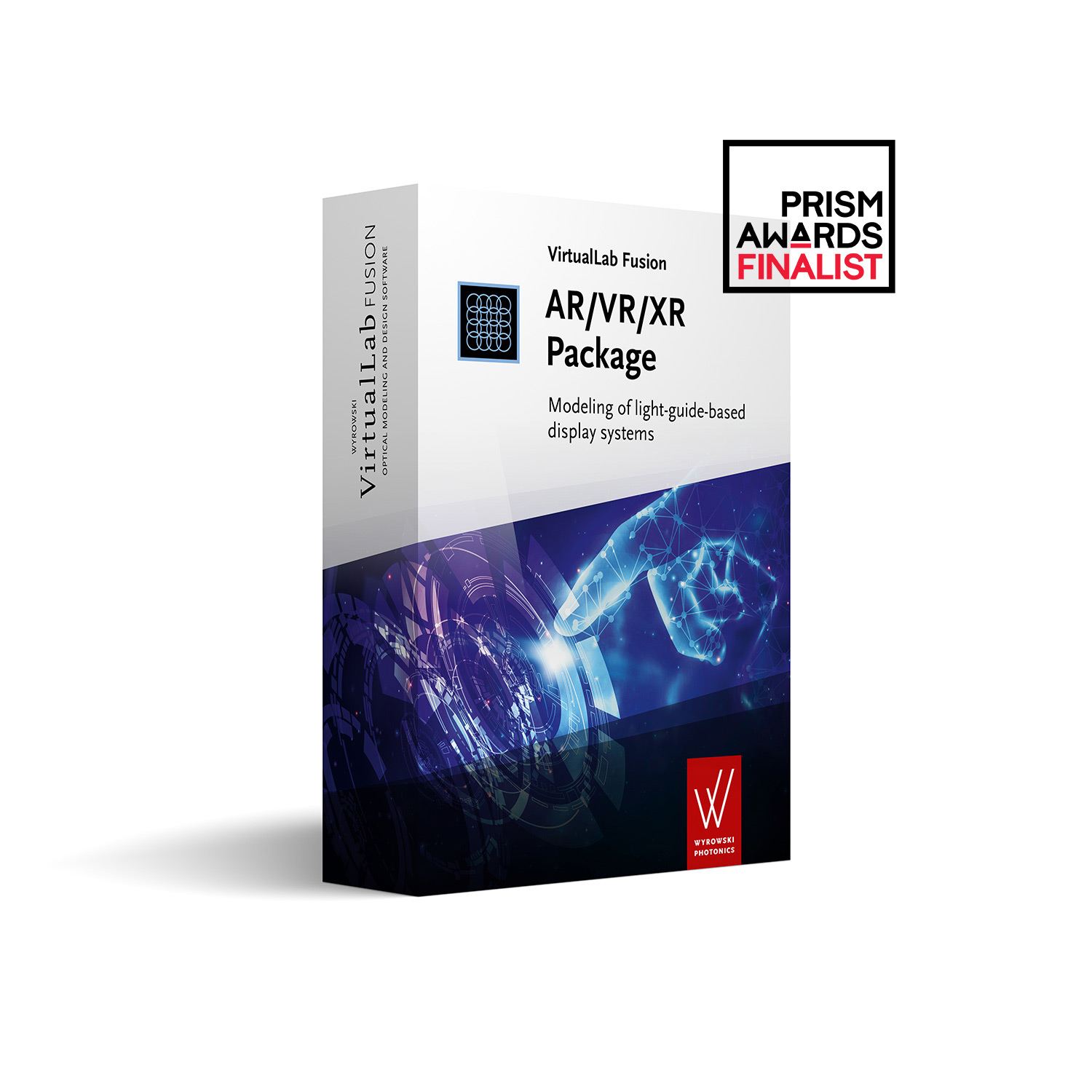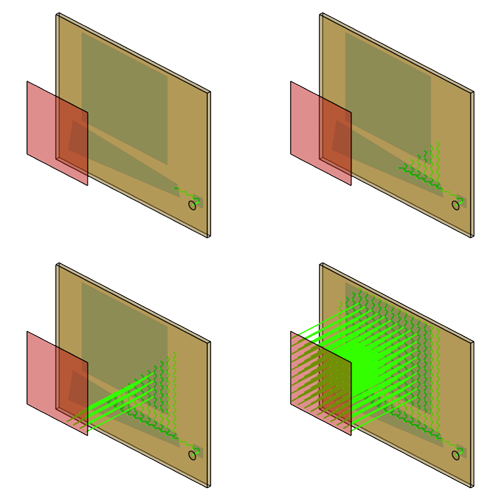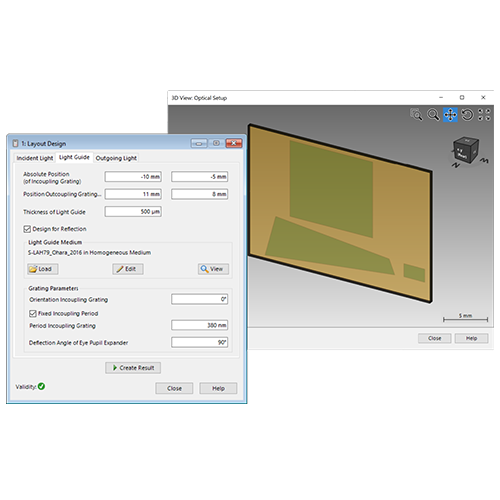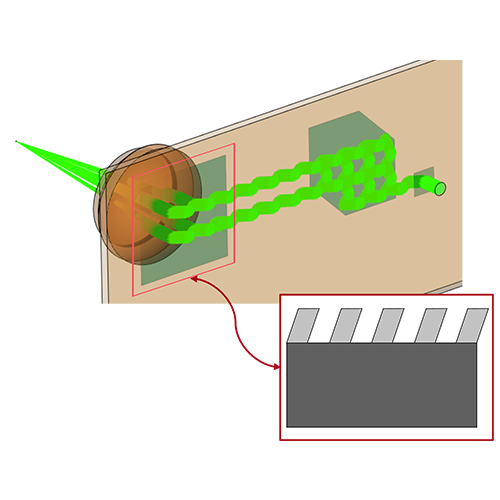
AR | VR | XR Package
Modeling of Light-Guide-Based Display Systems
Augmented and mixed reality (AR/MR) glasses overlay digital information onto the real world. The lenses must remain transparent while simultaneously displaying an artificial image. This is typically achieved using transparent light guides. In the simplest form, a grating structure on the surface couples light from the emitter into the optical plate near its edge. The light is then guided to the center of the plate via total internal reflection, where another grating structure couples it out to reach the eye.
Light Guides in VirtualLab Fusion
In VirtualLab Fusion, light guides are defined as glass-like slabs with flat front and back surfaces, on which arbitrarily shaped regions can be specified for grating structures. This design approach allows the software to efficiently create and optimize optical elements for augmented and mixed reality glasses.
With VirtualLab Fusion and the AR/VR/XR Package, you can design all commonly used light guide configurations for AR/MR glasses. One widely used layout is the HoloLens Type 1 configuration, which incorporates a 1D-1D beam expander. The package includes a dedicated wizard to help you input design parameters and automatically generate the component, which you can then refine and customize for more advanced designs. Alternatively, you can start from scratch and build your light guide based on your own specifications.
Key Tools in the AR/VR/XR Package
- k-Layout Visualization
This tool helps you analyze whether your design supports the desired field of view (FoV) by visualizing the optical layout in the k-domain.
- Footprint Analyzer
The Footprint Analyzer identifies where light interacts with the gratings, assisting in optimizing the shape of the grating regions for better performance.
- Grating Analysis Tool
This tool allows for the optimization of gratings by varying parameters such as height and fill factor as a function of position. By fine-tuning these parameters, you can improve the homogeneity of the output and enhance overall system performance.
The AR/VR/XR Package is primarily developed for designing light guides, but VirtualLab Fusion also enables you to design and analyze the performance of the complete AR/MR device, including the light guide, emitter, beam-shaping optics, and more. Below, you'll find links to use cases, one of which evaluates performance by applying a model of the human eye.
How the AR | VR | XR Package Extends VirtualLab Fusion
The AR/VR/XR Package in VirtualLab Fusion provides a comprehensive set of tools for designing and optimizing AR light guides. Whether you are working with well-established layouts or developing innovative new designs, the package offers the flexibility and precision needed to achieve high-performance results.



